Snoring and Sleep Breathing Problems
Obstructive Sleep Apnea (OSA) is a sleep disorder where breathing temporarily pauses because of tissue blockage in the upper airways. These breathing pauses interrupt your sleep, leading to many awakenings each hour. Sleep apnea is a serious and life threatening sleep disorder. It is important to see a doctor right away!
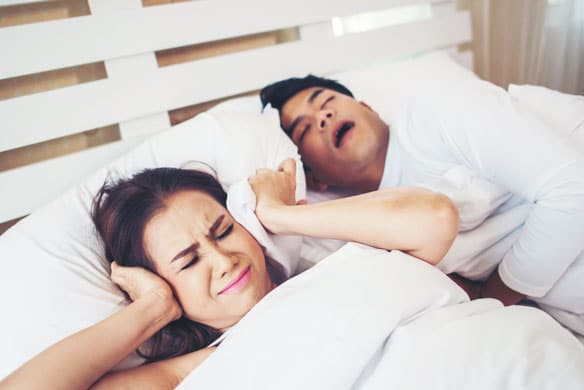
Sleep Apnea Warning: Sleep Apnea and heart disease are highly correlated. There are greater risks from high blood pressure, heart attack and stroke as the severity of OSA increases.
Sleep apnea can cause hyperactivity, poor school performance, and hostile behavior in children. Children who suffer from sleep apnea may breathe through the mouth during the day.
Signs and Symptoms of Sleep Apnea include:
- Choking or gasping following the pauses in breathing
- Decreased productivity
- Exhaustion during the day
- Feeling restless and not refreshed after waking up
- Feeling sleepy during the day
- Frequent pauses in breathing during sleep
- High blood pressure
- Higher risk of brain damage and stroke
- Higher risk of diabetes
- Higher risk of heart attack
- Irritability and depression
- Learning and/or memory or problems; not being able to concentrate
- Lack of energy
- Loud, chronic snoring
- Waking up with chronic headaches
- Waking with a dry throat, shortness of breath, and/or chest pains
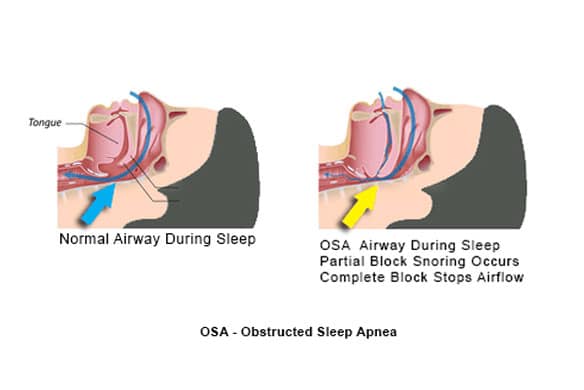
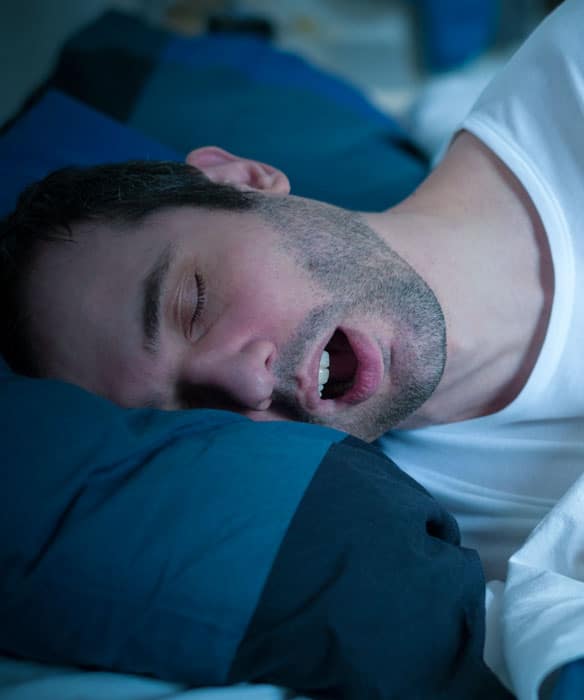
The Four Types of Sleep Apnea are:
Obstructive sleep apnea (OSA) - The most common form of this disorder occurs when the throat closes as the individual inhales during sleep, and the airway becomes blocked. The throat muscles relax too much during sleep, obstructing air flow in the upper respiratory tract. OSA results in choking, forcing the afflicted to wake up gasping for a deep breath. Most people affected by OSA are men between the ages of 30 to 50. At some point in time in their lives, many people will experience mild OSA. However, chronic and severe OSA requires medical attention.
Central sleep apnea - Cheyne-Stokes is a rare form of sleep apnea that is caused by a dysfunction of the brain that is responsible for controlling the breathing muscles. Central sleep apnea (CSA) and OSA have very different causes. CSA may require a neurologist.
Mixed apnea - OSA and central sleep apnea can sometimes combine. Although the exact causes are unknown, it is believed that weight-related cardiovascular and respiratory conditions contribute to mixed sleep apnea.
Complex sleep apnea - A rare mixed sleep apnea condition where the patient still experiences OSA after the physical obstruction to breathing has been removed.
Factors that Influence Sleep Apnea
Obese people, because they carry more muscle and tissue mass, are at a greater risk for OSA. Over 50 percent of those who suffer from Down's syndrome also suffer from OSA. Nasal congestion and alcohol consumption also contribute to OSA. The most common causes of obstructive sleep apnea in children are enlarged tonsils and adenoids. During the aging process, neurological signals that maintain throat muscles rigidity decrease and cause OSA for a number of people.
Central sleep apnea is rarely found in healthy people and usually accompanies a medical condition such as Parkinson's disease, advanced arthritis, and encephalitis.
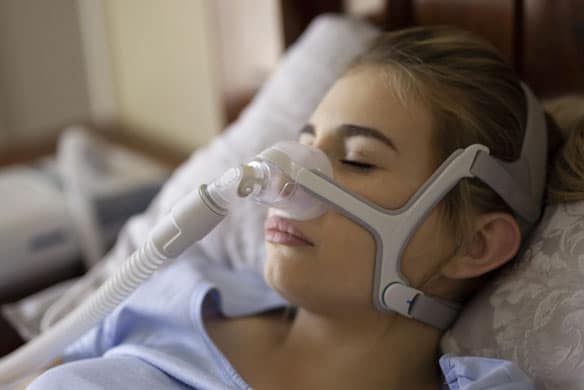
The Importance of Sleep Apnea Treatment
OSA increases the risk of congestive heart failure and stroke. OSA has a number of complications and signs. These include a higher risk of accidents, high blood pressure, inattentiveness at work or school, mood swings, general fatigue and erectile dysfunction. Children suffering from OSA can be hyperactive, moody, high strung, aggressive, and prone to bed wetting. Unusual sleeping positions can be a sign of OSA. Overall, people suffering from sleep apnea experience deterioration in their quality of life.
Diagnosing Sleep Apnea
When a patient is suffering from conditions such as high blood pressure, heart failure, and/or epilepsy, Dr. Clausen can recommend a diagnostic testing facility. In evaluating adults, the physical examination includes assessing upper body obesity, measuring for a wide neck, and looking for enlarged tonsils. Pediatric OSA examinations include checking the child for attention deficit disorder (ADD) issues and looking for enlarged adenoids and tonsils.
A patient's medical and sleep history are important in diagnosing sleep apnea. Drowsiness, headaches, heartburn, and medications can influence an OSA diagnosis. A sleep study may be required and is performed in a sleep lab. The results can help determine if an individual has sleep apnea or identify other potential sleep disorders.
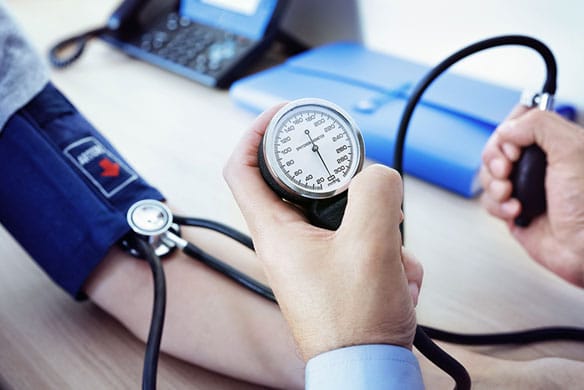
Treating Sleep Apnea
Dr. Clausen will review surgical and non-surgical treatment options. Non-surgical treatments include behavioral changes, medications, a Continuous Positive Airway Pressure(CPAP) machine, and/or oral appliances. Oral appliances are highly effective corrective devices for stopping snoring and OSA.
Medication - Steroid nasal sprays are used effectively to control sleep apnea caused by nasal airway obstruction. When OSA is caused by a thyroid condition, hypothyroidism treatment may be effective.
Behavioral changes - In milder cases, weight reduction and a change in sleep positions where snoring occurs have been effective.
Dental appliances - Mild to moderate OSA can be controlled by using dental appliances. Called oral appliance therapy (OAT), these dental appliances hold the palate open and position the jaw to keep the airway open. The OAT appliance are custom fit for the patient by a dentist so that it works properly. A continuous positive airway pressure (CPAP) machine uses a face mask that is worn during sleep to deliver gentle air pressure that keeps the soft palate open and eliminates sleep apnea.
